In Europe, Sweden, Finland and Norway all have a part of their territory in the Arctic. These regions have a lot in common, but also differences as they belong to different countries today.
In this article, you will find a brief history of Sweden and of the Arctic region, tips for the best time to visit, travel essentials and entry requirements, health and safety advice, a list of the best things to do, and insights into the local Sami culture, from basic vocab to the best foods and drinks to try.
Lastly, understand and immerse yourself in some Swedish and Sami history and culture with our reading list, movies and shows to watch.
Looking for what to pack? You can find our Arctic packing list here.
A brief history of Sweden

Before 800 AD, Sweden was split into several tribal kingdoms. It was in the Viking Period between the 9th and the 12th centuries AD, that the region established trading routes with the rest of the world, most notably with North America, Europe and even Asia.
Around the 10th century, King Olof Skötkonung, the first Christian King of Sweden, started consolidating power and beginning the conversion of the Swedes to Christianity.
The Swedish monarchy gradually became more centralized, and the country a kingdom in its own right. In the following centuries, Sweden expanded into Finland and signed agreements with Denmark and Norway for a unified force with a single monarch for the three kingdoms.
The country reached its golden era in the 17th century when the Swedish Empire dominated across the Baltics and Northern Europe, until it lost most of its territories in the Great Northern War (1700–1721).
Finland remained as part of Sweden until the Napoleonic Wars of the 19th century, subsequent to which the country decided to remain neutral in all European wars and adopted a pacifist foreign policy.
At the same time, it also became a constitutional monarchy and adopted the beginning of the welfare system that characterises the country today.
Sweden did not participate in WWI or WWII, and has often been a mediator in international conflicts. Today, it is a modern and egalitarian society at the top of most rankings on human development, equality, rights of minorities and economic development.
Quick facts about Sweden and the Swedish Arctic

Below are some additional facts that will help you understand just how unique Sweden and the Arctic regions are:
- Icehotel: Kiruna, in Sweden, is home to the Icehotel, the first ice hotel ever built, and constructed entirely from ice and snow every year with new designs. Come spring, the hotel melts down into the river it was built from again. We stay there during our Swedish Arctic tour.
- World’s most gender-equal country: It introduced its first gender-neutral parental leave law in 1974 and is known for progressive policies on work-life balance, child care, and gender equality in the workplace.
- Aerosol spray cans are banned: Sweden was one of the first countries in the world to ban aerosol spray cans in the 1970s. The country’s green revolution goes further with 99% of household waste being recycled and used to generate energy. Sweden is so advanced in its sorting and recycling processes that it imports rubbish from other countries.
- The Noble prize is Swedish: The Nobel Prizes, established by Swedish inventor Alfred Nobel, are awarded annually for achievements in physics, chemistry, medicine, literature, and peace. The Nobel Peace Prize is presented in Oslo, Norway, but all other awards are handed out in Stockholm. There is a Nobel prize museum in Stockholm you can visit.
- Lakes: Sweden has one of the highest number of lakes in the world, over 100,000. The largest of them all is Väddöviken.
- Swedish global companies: Many famous global brands were born in Sweden: Ikea, Volvo, Ericsson, Spotify, H&M, Hasselblad, AstraZeneca, etc.
- Polar nights & Midnight sun: The Arctic Circle is characterised for several weeks in the summer when the sun never sets and in the winter when it never rises.
- Ice driving: This adrenaline-filled activity is available in Sweden’s Arctic regions and is done on specialized vehicles equipped with studded tires. Drivers race on frozen lakes and snow-covered tracks.
- 100 words for snow: In a country where it snows so much, it should come as no surprise that the Swedish language has over 100 different words to describe it.
- Elk (moose) is the national animal: Especially in the Arctic regions of Sweden, it is common to see elk roaming around freely. This large animal is the national animal of Sweden.
- Sauna culture: Saunas are part of Swedish social life and many households have them. The tradition dates back centuries, and saunas are seen as a way to cleanse both the body and the mind. It’s not uncommon for people to gather with friends or family in a sauna for relaxation and conversation.
- The Right of Public Access (or right to roam): In Sweden, everyone has the right to roam (“Allemansrätten”) which allows everyone to walk, cycle, ride, ski and camp on any land with the exception of private gardens, near a dwelling house or on land under cultivation. This unique right gives Swedes and visitors access to nature for activities like hiking, camping, and picking wild berries or mushrooms. It’s a law that promotes a close connection with the natural world.
- The Swedish Arctic region is a UNESCO World Heritage site: This area is one of the largest biosphere reserves in Europe and spans 9,400 square kilometers of wilderness home to rare species of plants and animals. It is home to the Saami people and is “the largest area in the world (and one of the last) with an ancestral way of life based on the seasonal movement of livestock.” Moreover, the Sami tradition of reindeer herding is recognized as an intangible cultural heritage by UNESCO.
Travel tips for Sweden
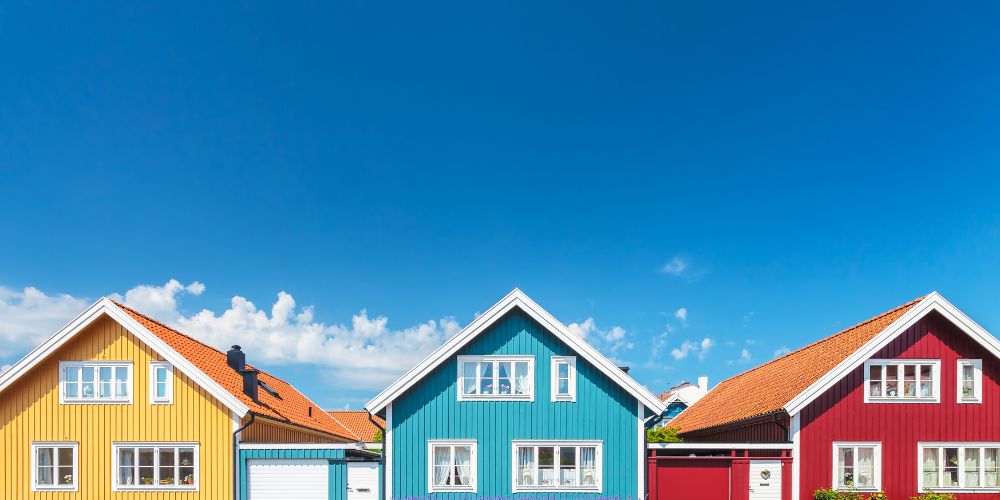
In this section we want to share general Swedish travel tips to help you plan your trip:
When to visit
The best time to visit Sweden depends on your preferences for weather, activities, and crowd levels.
Summertime sees the highest amounts of visitors as winters are long and bitterly cold throughout the country. That said, winter also gives you the opportunity to enjoy winter activities, especially in the Arctic region where there are many experiences to be had when the area is covered in snow.
Here’s a breakdown of the different seasons:
Spring (March to May) and Autumn (October to November)
This is the low season in most of the country because it is the end of winter or summer and most of the seasonal activities will close down at the end of March or September.
In the Arctic, everyone will take a month to a month and a half of time off, and get ready to switch from winter to summer experiences or vice versa.
Roads in the Arctic will be empty, hotels will have the lowest rates in the whole year and, if you plan your trip well to make sure what you want to do is still on offer, you could enjoy a bargain holiday with low season prices, no crowds, reasonable daylight hours, and more bearable weather, especially when it comes to the end of March.
This is why we schedule our trip to the Arctic to take place at the end of March and beginning to April. The weather is milder than in the dead of winter, days are long enough for us to be outside all day enjoying all the winter activities, but prices are the lowest they will be and there are no crowds.
Summer (June to August)
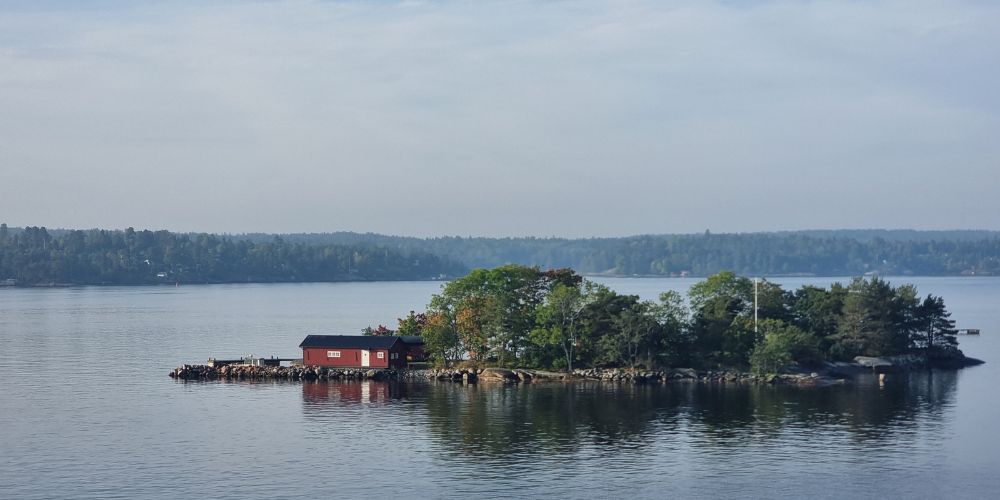
Summer in Sweden is all about being outdoors, enjoying nature and the many lakes and islands.
Swedes come out to play, sunbathe, go to the forest and swim in the lakes and sea. Stockholm is packed with terraces, sea-facing bars and outdoor living.
Days are long in the summer, especially the further north you go, with the Midnight sun making an appearance for a few weeks in the Arctic circle regions.
Winter (December to February)
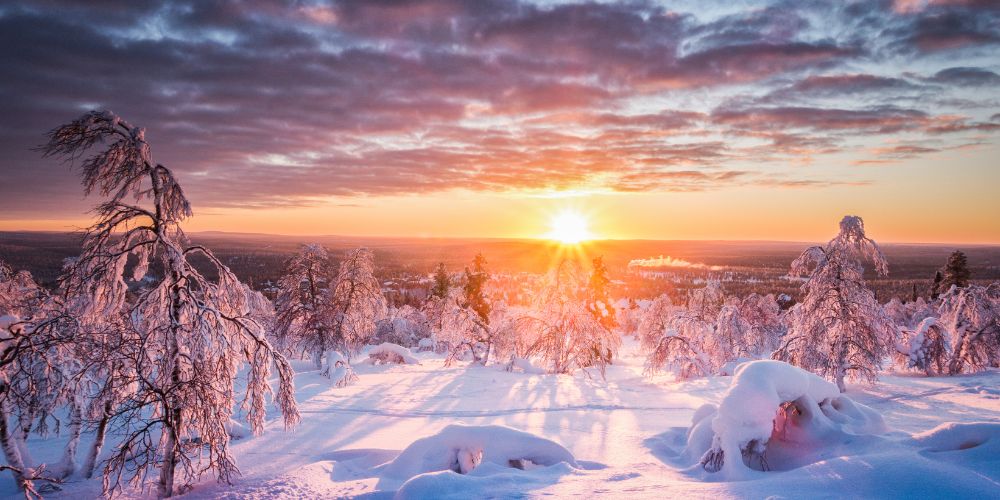
Stockholm is bitterly cold in the winter and not a particularly appealing city to visit. The wind can blow really hard and the cobblestone streets are hard to navigate with ice and snow. This would be the worst time to visit.
However, the Arctic region thrives at this time of year and offers a winter wonderland of activities, from dog sled excursions to reindeer encounters, immersive Sami culture experiences, ice fishing, Northern Lights chasing adventures, skiing, cold plunges, snowmobiling and so much more.
The Icehotel is rebuilt every December and reopens with new sculptures and rooms. You can spend the night in their regular warm rooms or book yourself a spot in one of the ice rooms, where you can sleep on an ice bed, over reindeer skins.
Public Holidays
There are plenty of public holidays in Sweden and locals do observe them without work interruptions. This means that the majority of shops, even essential services, will close every Sunday and on all public holidays.
Here’s a list of public holidays observed nationally in Sweden:
- New Year’s Day (Nyårsdagen) – January 1
- Epiphany (Trettondedag Jul) – January 6
- Good Friday (Långfredag) – Date varies (March/April)
- Easter Sunday (Påskdagen) – Date varies (March/April)
- Walpurgis Night (Valborgsmässoafton) – April 30, a celebration marking the arrival of spring.
- Labor Day (Första maj) – May 1
- Ascension Day (Kristi Himmelfärdsdag) – 40 days after Easter (May)
- Midsummer (Midsommardagen) – Saturday between June 20 and June 26, One of the most important and beloved holidays in Sweden, celebrating the summer solstice.
- All Saints’ Day (Alla helgons dag) – First Saturday in November
- Christmas Day (Juldagen) – December 25
- Boxing Day (Annandag Jul) – December 26
- Swedish National Day (Sveriges nationaldag) – June 6
- Crayfish Party (Kräftskiva) – Early August
Passport and visa requirements
Sweden joined the European Union in 1995 and is part of the free movement of people and goods called the Schengen Zone.
If you are a citizen of a non-Schengen country without a visa-free travel agreement with the area you need a Schengen visa.
You should apply for it at the embassy of the country you plan to first enter the zone through. Your Schengen visa is typically valid for up to 90 days of travel within the zone in a 180 days period.
Schengen Visa: While the general visa application process is similar for all countries within the Schengen zone, the requirements do change and can take weeks to process so allow enough time for this. Here is a list of nationalities that need a visa for Sweden.
Passport Validity: We strongly recommend that you make sure your passport is valid for at least 6 months after departure, however, the official requirement is for 3 months. You also typically need at least 2 empty pages.
Health and safety

Nobody wants to get sick when on vacation but, if the worst is to happen, it pays to be prepared.
Bring all the medication you’ll need: Sweden is a sparsely populated country so, if you plan to veer away from the main cities, it is strongly recommended to bring any prescription medication you may need and enough of it to last you the entire trip, especially if you plan to go to the Swedish Arctic region where care facilities may be farther away.
Your specific medication may not exist in Sweden, or it may require a prescription you need to see a doctor for, save time and hassle by bringing everything you may need with you. Review what you should bring in your first aid kit here.
IMPORTANT: Make sure any prescription medication comes in its original pharmacy packaging, and with the corresponding doctor note and prescription to avoid issues at the border. It is your responsibility to check that whatever medication you bring can indeed be taken into Sweden. What may be legal in your country, or even sold over the counter, could be a controlled substance elsewhere. More details here.
Get that coverage: We never leave the house without purchasing extensive medical and travel insurance coverage and this is why we make it mandatory to join our tours. You should make sure that you have adequate medical insurance to cover any unforeseen medical expenses.
Unexpected accidents do happen, and if you needed to be evacuated back home with an injury, the medical bill could bankrupt you.
If you are from the European Union or the UK, bring your medical card as it will cover you in Sweden and give you access to free or reduced healthcare costs. However, it may not cover repatriation, ongoing medical treatment, or non-urgent treatment so you need insurance for that.
The best travel insurance will differ for each traveler, depending on the nature, style, and length of your trip, so we recommend using an aggregator and comparison tool such as Travel Insurance Masters to find the right one for you depending on what coverage you want, age, location, trip, etc.
In case of emergency: Sweden has one emergency number for all services: 112. Dialing 112 will connect you to the fire department, police and ambulance services.
Tap water: Tap water is very safe for drinking everywhere in Sweden, in fact it’s some of the best in Europe. The most you’ll experience is potential differences in taste, but you’ll never have to worry about safety when you drink tap water. Bring a water bottle with you so you can top up directly from the tap.
Safety in Sweden for solo female travelers
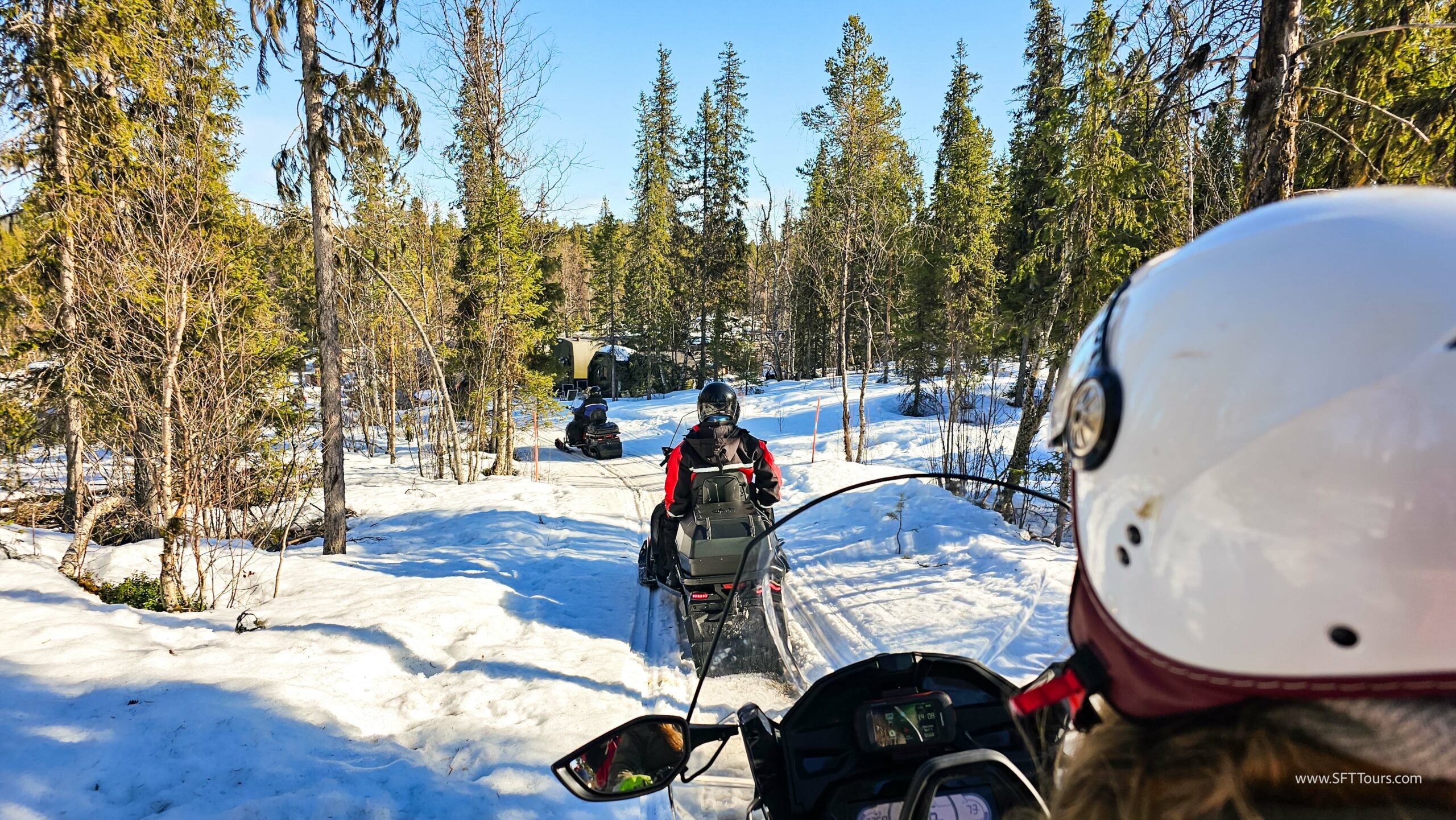
When we conducted our first Solo Female Travel Survey, one of the most relevant take-aways was that women who travel solo unanimously worry about their personal safety. The best countries for first time solo female travelers all have safety in common. That’s why we created the first and most complete resource for women who travel solo to find safety information by country or destination.
With safety data coming from the US and UK Travel Advisories and the Global Peace Index, the index considers factors like the risk of theft, scam and harassment, as well as analyzing attitudes towards women in each country to rank each country from 1-4, 1 being the safest and 4 being the most dangerous for solo female travelers.
Sweden is currently rated as a very safe destination for solo female travelers on our safety index.
Exercise regular caution and review our safety tips for solo female travelers to ensure you stay safe and have an empowering travel experience. Of course, incidents of petty crime, such as pickpocketing or theft, happen as they could anywhere.
Always keep your valuables safe and your bag in the front and zipped. Slash and theft proof cross-body bags like the ones we listed on this article are a great idea, and in crowded areas, keep your arm on your bag’s zipper for extra protection.
You can read our full article on safety tips here.
If you want to know how to stay safe and prevent a negative experience or encounter on your travels, you can check out EMPOWERFUL, a series of 35+ sessions, 40+ experts and over 50+ hours of learning via masterclasses, panel discussions, and inspiring interviews to empower YOU to travel solo!
Getting to and around Sweden

Sweden is on the Scandinavian peninsula so it is best reached by plane from mainland Europe or the UK / Ireland, and by road or ferry from other Scandinavian countries. In fact, the first time I visited, I arrived in Stockholm from Helsinki on the overnight ferry service and it was magical, as well as comfortable.
Getting to Sweden
If you are traveling to Sweden from a different continent, flying is going to be the easiest (or potentially only) option. Stockholm is a well connected city, home to the largest Scandinavian airline, SAS. Gothenburg and Malmo are the second and third largest airports in the country.
Most international airlines have direct flights to the Swedish capital, and low cost airlines easyjet, Ryanair, Norwegian and Air Baltic provide connectivity to Europe and North America.
The Arctic region of Sweden is only reachable via plane from Stockholm or Copenhagen. Alternatively, you can also take the overnight train from Stockholm to Lulea or Kiruna. The journey is long and takes well over 12 hours, but you get to enjoy the landscapes. You can book a bunk bed in a shared compartment or a single one.
Trains also connect Malmo with Copenhagen (30min journey), and Oslo to Stockholm (6-7 hours).
You can drive into Sweden from Denmark via a bridge, from Norway and from Finland, though that is a long route.
As mentioned, ferry services connect Sweden with Estonia (Tallinn to Stockholm), Germany (Rostock to Trelleborg (Sweden) or Travemünde to Malmö), Poland (Gdynia to Karlskrona) and Finland (Helsinki to Stockholm).
Getting around Sweden
Getting around Sweden can be done by car, bus, train or plane.
Sweden has an extensive and efficient train network. SJ is the primary operator, Vy is the operator connecting Stockholm with the Arctic.
The high-speed trains (e.g., X2000) are fast and comfortable, linking major cities like Stockholm, Gothenburg, and Malmö.
FlixBus and Swebus operate affordable long-distance routes, connecting major cities, towns, and even remote areas.
In Stockholm, the metro is one of the largest and most efficient metro systems in Europe and will take you anywhere. You don’t need to buy a ticket, just tap your credit card. Announcements and signs are in Swedish only but Google maps helps to make sure you are going the right way. In Gothenburg and Malmö you can use the tram network.
The Stockholm Archipelago consists of over 30,000 islands, and many of them are accessible by ferry. Ferries are operated by Waxholmsbolaget, SL, and other local services, offering routes to islands like Vaxholm, Grinda, and Sandhamn.
How many days to spend in Sweden
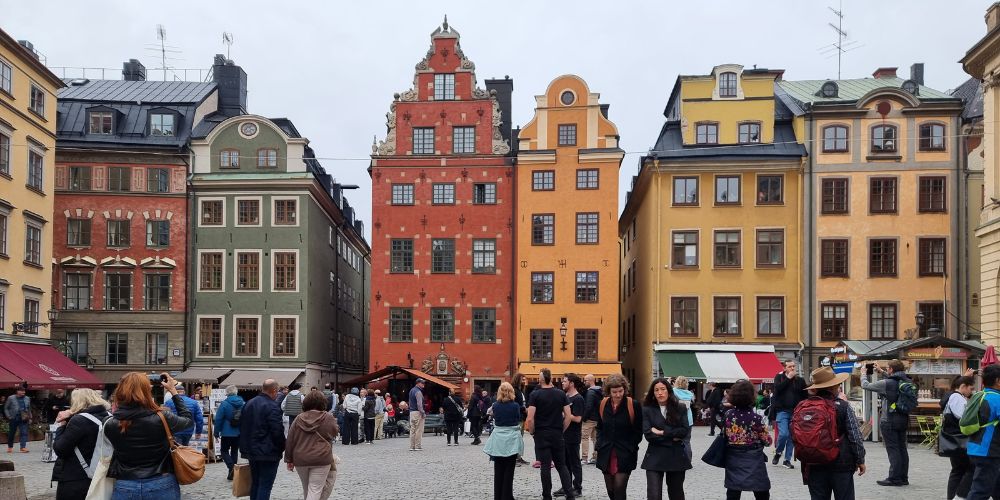
Most of what is there to see in Sweden can be covered in a couple of weeks, unless you want to get off the beaten path and go into nature.
If you have just 2-4 days, I recommend focusing on the cities of Stockholm, or Malmo. If you have a week, you can combine both Stockholm and the Arctic regions by either flying to Lulea / Kiruna or taking the overnight train like I did.
In the summer months, the Arctic offers lots of outdoor activities, but it is in the winter when it shines with snowmobiling, dog sled, Northern Lights spotting, Sami culture, the Icehotel and so much more.
Top places to see and things to do in Sweden
There are lots of places to see and things to do in Sweden but they tend to be concentrated either in the main cities of Stockholm, Malmo and Gothenburg, or in the Arctic region.
Stockholm

The capital of Sweden offers quite a lot to the tourist, and enough to fill 3-4 days, especially during the summer months when the sun is shining and everyone is out and about on their boats, sun bathing in the terraces and enjoying the short but beautiful summer.
Start at Gamla Stan (Old Town), Stockholm’s charming medieval heart, filled with narrow, cobblestone streets, colorful buildings, and historic landmarks like the Stockholm Palace and the Nobel Museum.
The Vasa Museum houses the world’s only preserved 17th-century warship, the Vasa, which sank on its maiden voyage in 1628 and was salvaged in 1961. The museum provides an amazing glimpse into Swedish maritime history. Plus can you imagine how large a full ship is? The museum is around it and indoors. It’s like being in a pirate movie.
The world’s first open-air museum, Skansen, features historic buildings from different regions of Sweden, including farmsteads, schools, and workshops, along with a zoo featuring native Scandinavian animals.
The Royal Palace is one of the largest palaces in Europe, and the official residence of the Swedish monarch. Interestingly, it is open to visitors.
Don’t miss out on a visit to the Abba Museum.
If you have extra time, you should spend it in the Stockholm Archipelago, made up of more than 30,000 islands spread out across the Baltic Sea, and ready for all sorts of outdoor water activities like boating or kayaking.
The islands are connected to Stockholm by ferry and the most popular ones are Vaxholm (with its 16th century fortress), Grinda (perfect for swimming) and Gotland, the largest island.
The town of Visby, on Gotland, is a UNESCO World Heritage site known for its well-preserved medieval buildings, stone walls, and cobblestone streets. It’s especially beautiful during the Medieval Week in August, when the town comes alive with historical reenactments, music, and festivals.
Gothenburg
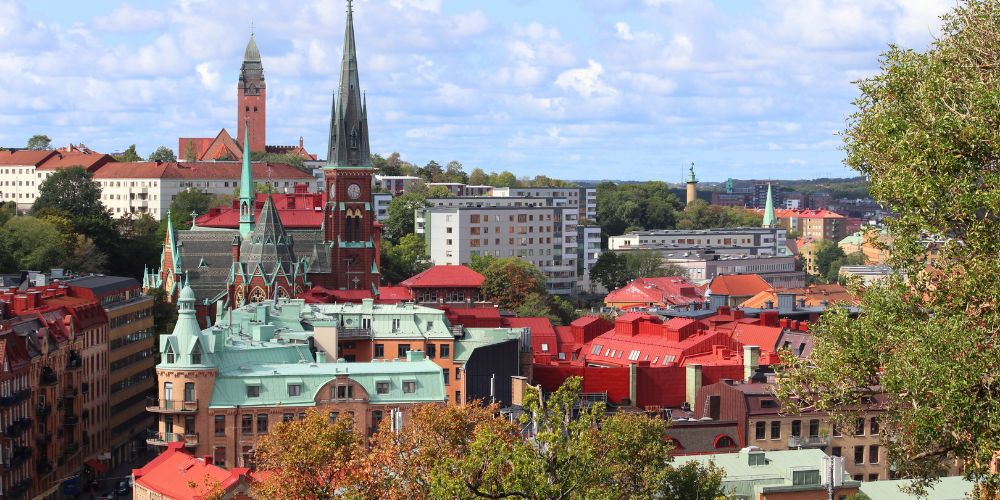
Gothenburg is another Swedish city by the sea and it is known for its Amsterdam-like canal.
The city is home to one of Scandinavia’s most popular amusement parks, Liseberg, with rides, games, and attractions in the heart of the city. It’s especially magical during the Christmas season when it’s transformed into a winter wonderland.
Feskekörka (Fish Church) is an indoor fish market housed in a building that resembles a church. It’s the place to sample fresh seafood, including Sweden’s famous herring, smoked salmon, and shrimp.
Swedish Arctic

The Arctic region of Sweden, the capital of which is Kiruna, is far less developed when it comes to tourism than that in Finland or Norway, but offers the same outdoor adventures and well preserved Sami culture and traditions.
You can go snowmobiling or dog sledding with huskies, skiing and cross country skiing, and spend a night at one of the ice rooms in the Icehotel, the first in the world turning 40 soon.
The Abisko National Park is famous for views of the Northern Lights from the Abisko Sky Station, considered one of the best places to spot them in the world. Located 250km north of the Arctic Circle, the conditions here are clear and optimal for viewing opportunities. In the summer, you can enjoy the midnight sun.
Malmö
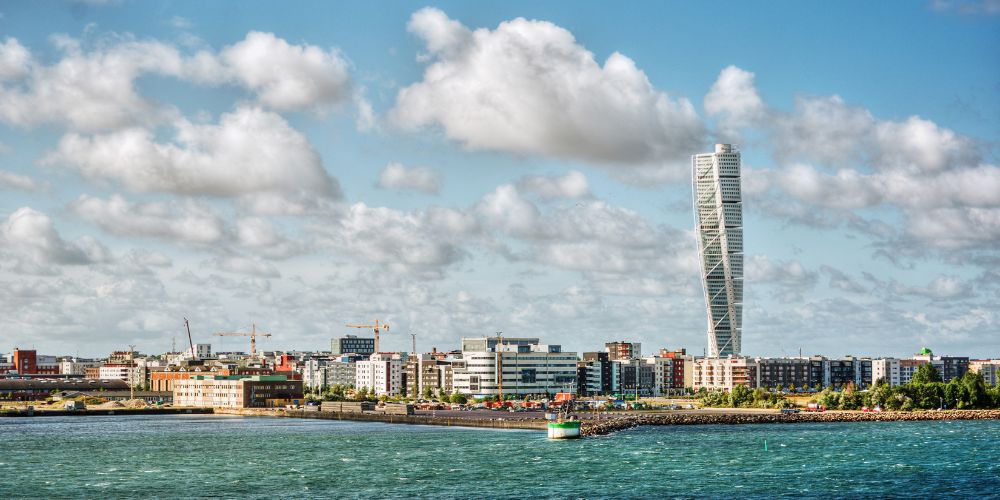
Sweden’s second largest city is well connected to Denmark via the Öresund Bridge and to other parts of Europe.
When in Malmo, you have to check out the Turning Torso, by Spanish architect Santiago Calatrava, the tallest skyscraper in Sweden spiraling 190 meters into the sky, offering panoramic views of the city and the Öresund Strait.
Visit the Malmöhus Castle, one of the oldest Renaissance castles in Sweden, and housing several museums, including the Malmö Museum and Museum of Natural History.
Ribersborgsstranden (Ribersborg Beach) is a popular spot for locals to relax in the summer. It has great views of the Öresund Bridge and is perfect for a picnic, swimming, or cycling.
The High Coast (Höga Kusten)
The High Coast is a remote UNESCO World Heritage site, famous for its dramatic cliffs, archipelagos, and deep forests. It’s a paradise for hiking, nature walks, and boating, offering some of the most pristine wilderness in Sweden. Skuleskogen National Park is a highlight of the region.
Travel essentials for Sweden
In this section we will look at a range of other things to consider when traveling to Sweden as a solo female traveler.
Money and currency
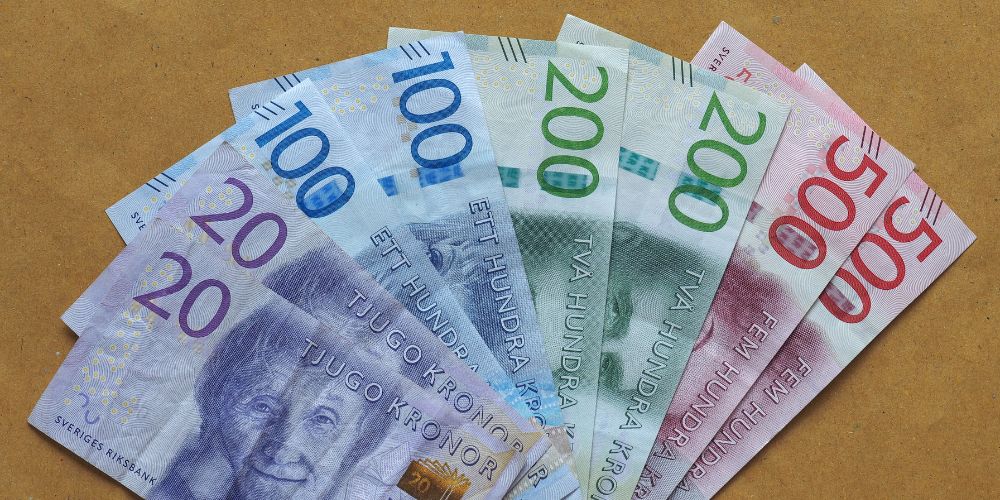
Sweden uses the Swedish Krona (SEK), however, you are unlikely to need any cash.
The country is practically cashless and everything can, and oftentimes needs, be paid by credit card, even the metro in Stockholm where you simply tap your credit card when you enter and when you leave.
Many museums and shops no longer accept cash and only cards can be used to make payment; Sweden is considered one of the most cashless societies in the world.
ATMs: You will find ATMs across the country but since cash is rarely needed, I would not recommend you take out any Krona.
Pro tip: Avoid ATM machines that are standalone and not attached to a bank like Euronet. These charge exorbitant fees and give an extremely poor exchange rate, as they are an exclusive ATM business. Additionally, if your card gets taken, it is much harder to retrieve it than from a bank.
Credit cards: Major credit cards such as Visa and Mastercard are widely accepted in larger cities and tourist areas and often the only payment method possible. Contactless payment methods, such as Apple Pay and Google Pay, are also popular. American Express may be less accepted than Visa / Mastercard so you should always have an alternative with you.
Tipping culture: Tipping is not expected in Sweden and rarely done, especially now that all payments are done by card. Rounding up will be welcome but not expected and nobody will be offended if you don’t tip. Some restaurants will have a service charge added to the bill but this is clearly stated.
Local culture and customs
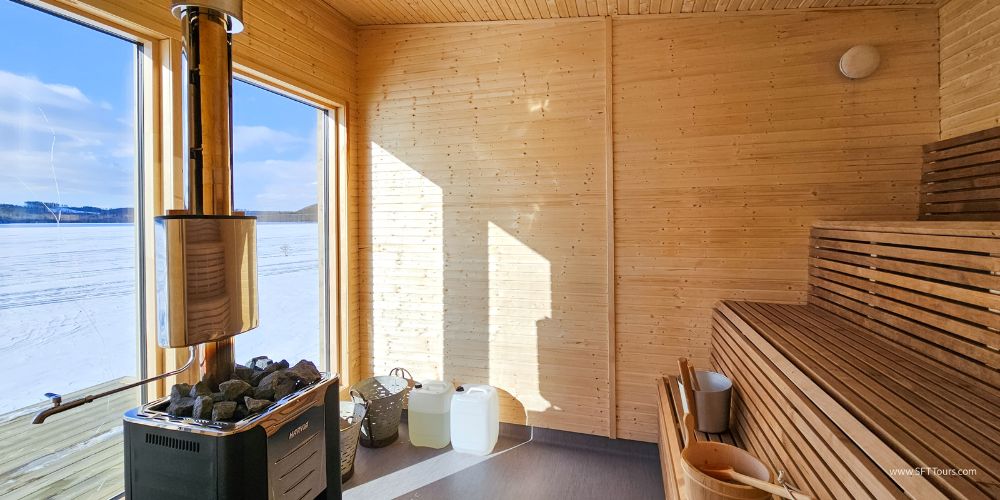
Scandinavian countries all share common cultural values and customs and it is important to learn more about this before a trip to ensure you are polite and act as is expected.
Personal space: All Scandinavian countries highly value personal space and will always maintain their distance with others in public places such as buses, trains, etc.
Privacy: Personal lives and private matters are kept just that, private, in Sweden. If you meet someone, you should avoid making too many personal questions and let them take the lead to establish boundaries. Swedes like to keep to themselves and do not openly share with strangers.
Queueing: Waiting for your turn is very important in Sweden and jumping the queue is a very rude behavior.
Punctuality: It is very important to always be on time for appointments as being late is seen as very rude. If you are delayed, you should alert the person.
Sauna culture: An important part of the local culture is to attend a sauna. Many are nude while some allow wearing swimming suits. If you are invited to a sauna experience, you should accept. While there, always be quiet and respect the atmosphere. Saunas are meant to be relaxing, a time to focus on oneself, so avoid being rowdy or loud.
Recycling: As previously mentioned, Sweden is very involved in environmental practices and recycling is part of daily life. If you have rubbish, you should use the right bin to dispose of it.
Buying alcohol and drinking: Sweden has a complicated relationship with alcohol. I went for dinner to a friend’s house when I was in Stockholm and wanted to bring a bottle of wine. It was not as easy as I expected to buy wine in Sweden. This is because alcohol is only sold at Government owned Systembolaget stores. At convenience stores and supermarkets you will only find products with less than 3.5% of alcohol.
Additionally, the official stores are only allowed to sell alcohol to those above the age of 20 and you may be asked for an ID. The product range on sale is also limited to what the Government imports.
Basic Swedish words to know
Swedes speak English so you are unlikely to need any Swedish.
However, you will find that public transportation signs and announcements are only done in Swedish, and that in stores signs are also only in Swedish. Thus, learning a few Swedish words is useful.
Here is a list of basic words:
- Hej – Casual Hello
- God morgon – Good morning
- God kväll – Good evening
- God natt – Good night
- Hej då – Goodbye
- Tack – Thank you
- Tack så mycket – Thank you very much
- Varsågod – You’re welcome
- Ja – Yes
- Nej – No
- Förlåt – Sorry / Excuse me (when bumping into someone or apologizing.)
- Ursäkta mig – Excuse me (if you need to get someone’s attention or need help)
- Toalett – Bathroom
- Hur mycket kostar det? – How much is it?
- Vatten, tack – Water, please
- Kan jag få notan, tack? – Can I have the bill please?
- Snälla – Please
- Skål! – Cheers!
- Välkommen! – Welcome!
Local Cuisine and customs

Swedes eat early; Lunch is typically between 11.30am and 1pm while dinner between 5pm and 7pm.
There are two particular features of Swedish eating culture, fika and Smörgåsbord.
Swedes take fika seriously and often have it twice a day, once in the morning and once in the afternoon. The word “fika” even has its own verb form: “to fika.” Fika is more than just a coffee break, it’s an integral part of Swedish culture. It’s a time to relax, drink coffee, and enjoy something sweet like a cinnamon bun or cake.
A Smörgåsbord defines how special meals are eaten in Sweden and consists of a buffet of hot and cold dishes to share, a bit like the Spanish tapas meal. You will always find breads, butter, cheeses, cold cuts and more at a Smörgåsbord.
Best Swedish and Arctic Foods to try
Here’s a few dishes you have to try on your visit to Sweden and the Swedish Arctic:
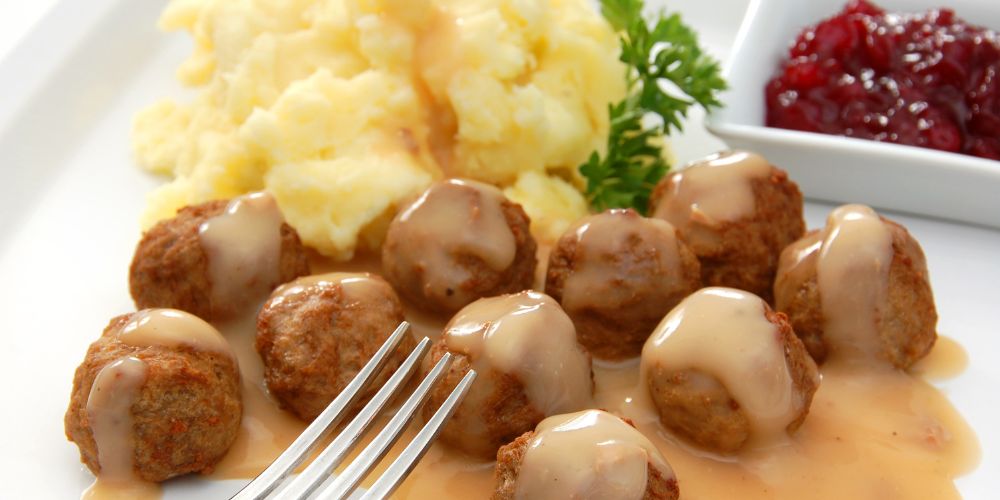
- Meatballs (köttbullar): If you have ever been to Ikea you will have seen the famous meatballs that draw so many visitors to the stores. They even ran a campaign over 2023 Christmas where they were selling a meatball the size of a turkey. Meatballs tend to be made of beef and pork and are served with gravy, mashed potatoes and sometimes lingonberry jam.
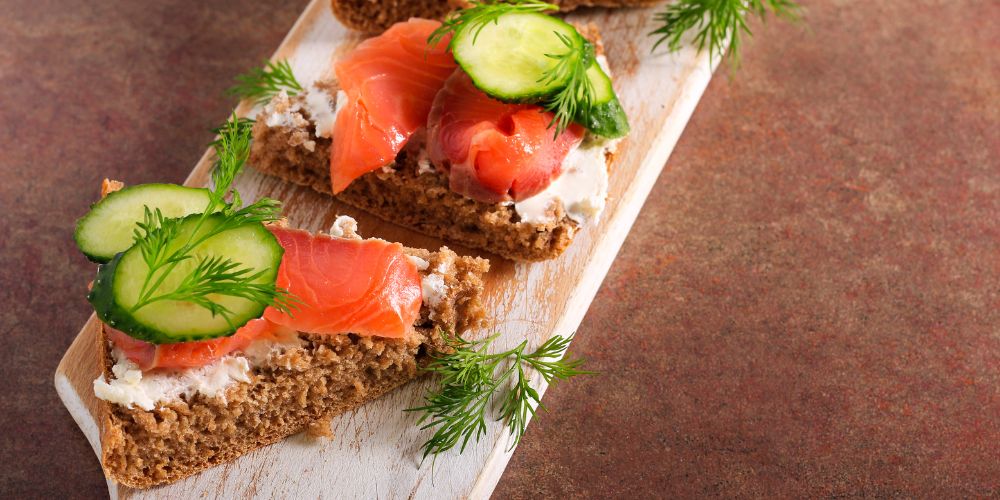
- Cured salmon (gravad lax): This common dish is eaten as brunch, or even breakfast, for lunch, or as part of a series of shared plates, and is served with crackers or rye bread and mustard sauce.
- Herring: This fish is eaten in many ways, from pickled to smoked, and can be found at breakfast buffets or on restaurant menus. It can be eaten smoked or pickled and is usually eaten with boiled potatoes and sour cream.
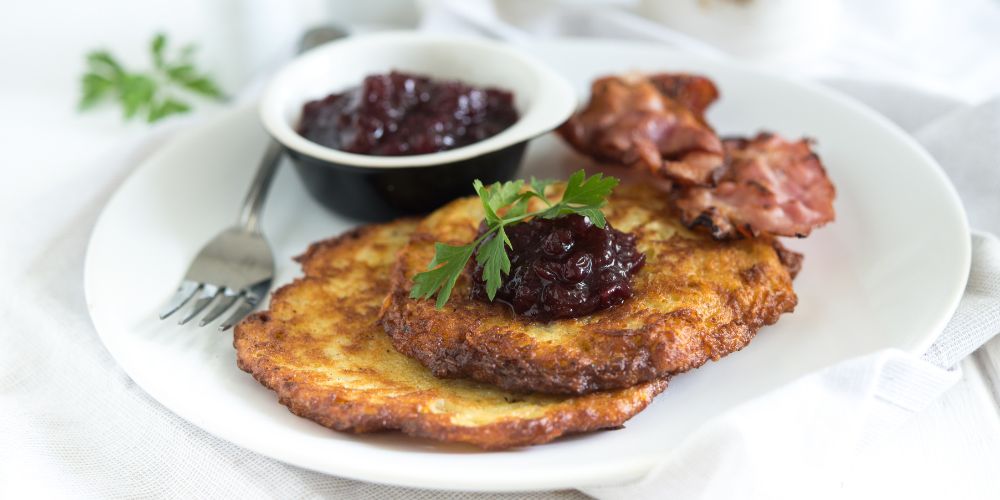
- Potato pancakes (Raggmunk): Similar to a hash brown, these crispy potato pancakes are made with grated potatoes mixed with flour, egg and milk then fried. They are indulgent and delicious, and served with lingonberry sauce.

- Reindeer meat: This kind of meat is commonly eaten in the Arctic region of Sweden and is usually served with mushrooms, mashed potatoes and lingonberry jam.
- Salmon and Arctic char: These two fish dishes are found in the cold clean waters of the Arctic region and are a treat. They can be served grilled, cured or smoked.

- Potato dumplings (Palt): A traditional Sami dish made with potatoes stuffed with meat and then boiled.
- Sami bread (Gáhkko): A traditional bread made from barley flour, water, and salt. It’s baked in a flat, circular shape, and is often served with reindeer or fish. We will learn to make it with a Sami family during our Swedish Arctic trip.
- Reindeer stew (Bidos): Rich and hearty stew made from reindeer meat, often cooked with potatoes, onions, and root vegetables like carrots and turnips.
Best Swedish Desserts and sweets to try
Sweden is not famous for its sweet treats but there are some that are well worth a try and that will sweeten any day.
Most of the desserts use the wild berries commonly found in the country and foraged by locals when in season.

- Cinnamon buns (Kanelbullar): A national treat, and Swedes are passionate about them. In fact, Cinnamon Bun Day (October 4th) is a celebration of this iconic pastry. Swedes often make their kanelbullar at home or buy them fresh from bakeries, enjoying them with a cup of coffee. The buns are sweet, spiced, and sometimes sprinkled with sugar on top.

- Cloudberries (hjortron): Small, orange berries that grow in the Arctic and subarctic regions. They have a sweet and tart flavor and are a delicacy in Sweden. They are made into jam or used to complement dishes like cakes or ice cream.

- Lingonberry pie: A pie or tart made with a buttery pie crust filled with a tangy lingonberry filling, often combined with custard or whipped cream.
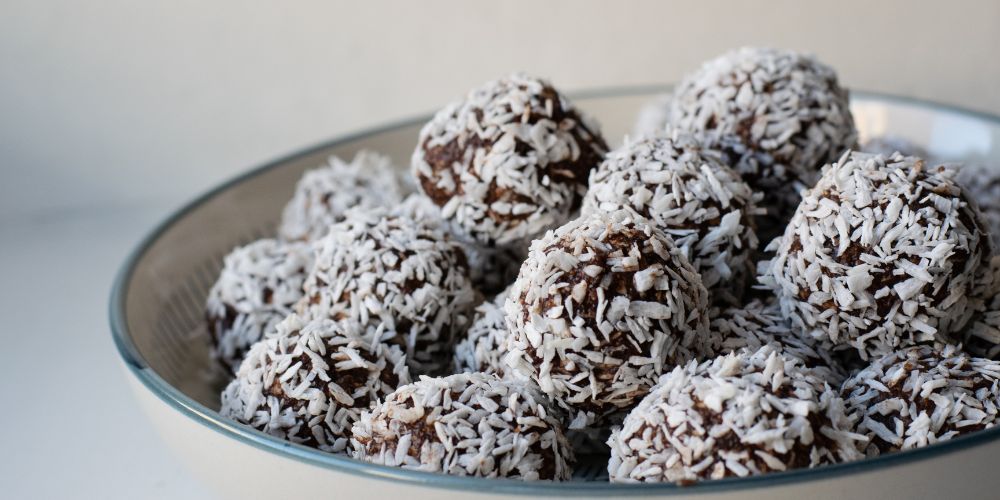
- Chocolate balls (Chokladbollar): A no-bake Swedish chocolate treat made from a mixture of butter, sugar, cocoa powder, oats, and a touch of coffee (sometimes). The mixture is rolled into small balls and coated in coconut flakes or sugar. You will find this in most convenience stores, bakeries and cafes. They are like energy balls.
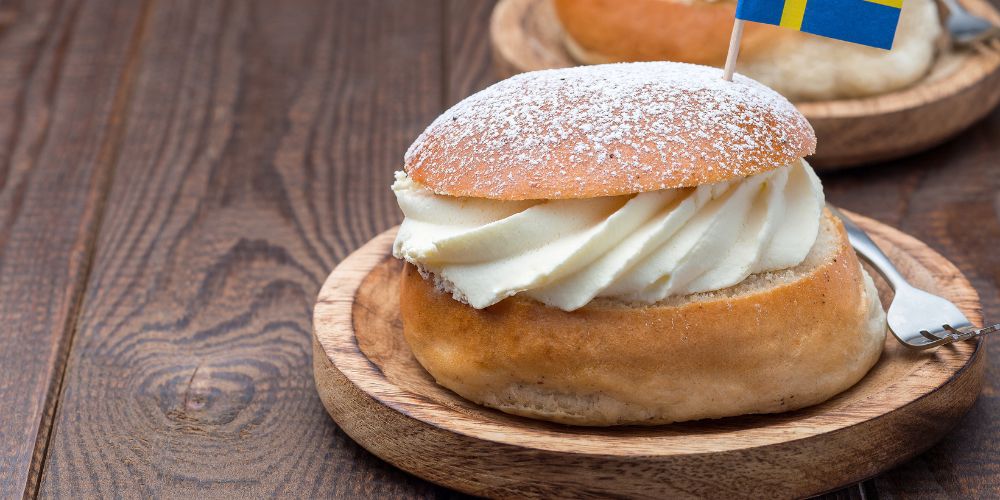
- Semla: A sweet, cardamom-flavored bun filled with almond paste and topped with a generous dollop of whipped cream. It’s traditionally eaten on Fat Tuesday before the start of Lent but can also be found outside this time of year.
Best Swedish drinks to try
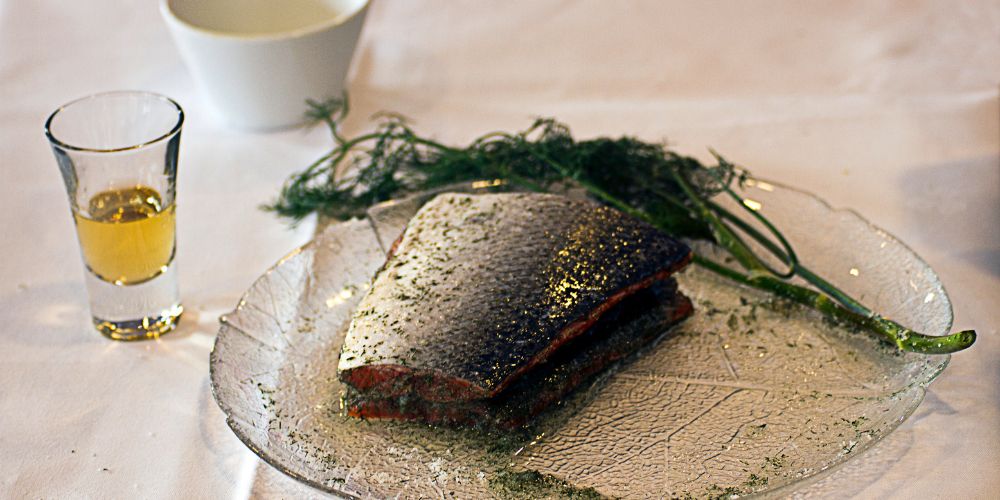
As previously mentioned, alcohol consumption is highly controlled in Sweden but, in recent years, there has been an explosion of craft beer and Schnapps.
Besides alcoholic drinks, there are also many other local favorites only found in the country.
- Coffee: Swedes are one of the highest consumers of coffee in the world, probably thanks to the well established tradition of fika, which can be enjoyed twice a day, in the mid morning and in the mid afternoon.
- Saft (fruit drink): Fruit syrup diluted with water and usually in the flavor of elderflower, black currant, or raspberry.
- Aquavit (Akvavit): Also enjoyed in other Scandinavian countries like Iceland, is a traditional Swedish spirit made from grain or potatoes, flavored with caraway, dill, and other spices. It’s typically served chilled and sipped from small glasses as a digestif after a meal.
- Punsch: A sweet, rum-based Swedish liqueur flavored with spices like cardamom and citrus. It’s a traditional drink, often served warm, especially during the winter months. It’s the Swedish version of gluhwein.
- Beer: Popular beer brands such as Pripps Blå, Carlsberg Sverige, and smaller craft breweries like Omnipollo and Mikkeller are commonly found at bars and restaurants.
- Snaps: A strong, herbal-flavored Swedish spirit, typically consumed in small shots, often as part of a buffet during holidays like Midsummer and Christmas.
Swedish media and literature
Swedish writers and movie directors have been quite prolific, especially when it comes to the Nordic Noir genre.
Books based in or about Sweden and the Arctic region
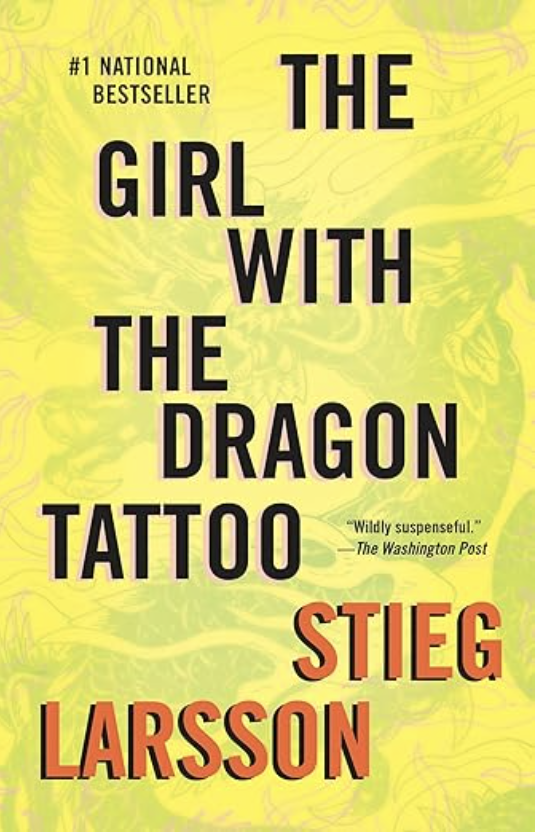
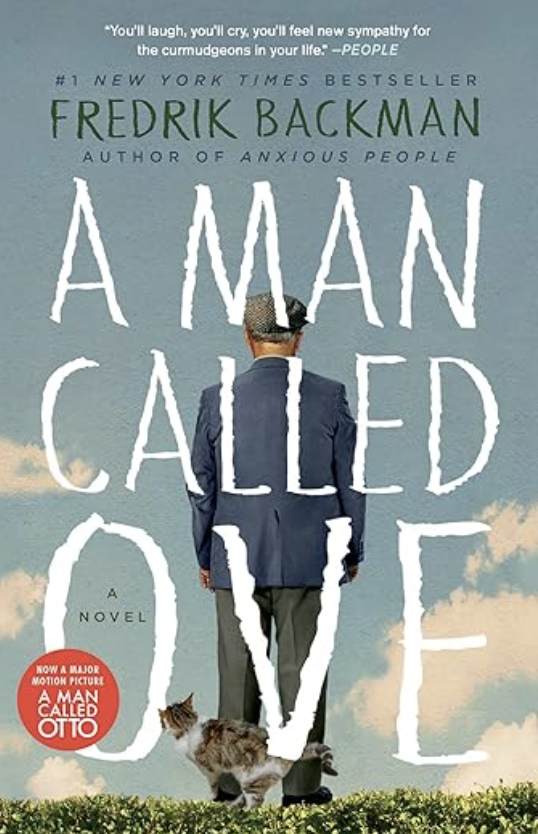
There are many books that are set in the country or about it and below is our selection to get you prepared for a trip and better versed in the local culture:
- The Girl with the Dragon Tattoo by Stieg Larsson (2005): A very popular crime thriller following investigative journalist Mikael Blomkvist and hacker Lisbeth Salander as they unravel a dark family mystery, bringing Swedish Nordic Noir into global fame. There are 7 books in the series and they were also turned into a movie starring Daniel Craig.
- A Man Called Ove by Fredrik Backman (2012): A heartwarming, humorous story of Ove, a grumpy, isolated man who finds new meaning in life through an unlikely friendship with his neighbors, reflecting Swedish values of community and resilience. The New York Times bestseller. The book was turned into a movie available on Netflix called A Man Called Otto.
- The Emigrants by Vilhelm Moberg (1949): The first novel in Moberg’s Emigrant Saga, depicting the hardships and hopes of Swedish peasants emigrating to America in the 1800s, reflecting the broader historical context of Swedish immigration.
- The 100-Year-Old Man Who Climbed Out the Window and Disappeared by Jonas Jonasson (2009): A humorous and absurd adventure following Allan Karlsson, a 100-year-old man who escapes his nursing home and embarks on a wild journey, all while recounting his surprising involvement in historical events.
- The Ice Princess by Camilla Läckberg (2003): A mystery set in the Swedish coastal town of Fjällbacka, where writer Erica Falck investigates the death of a childhood friend, uncovering hidden family secrets and unraveling a chilling crime.
- The Castle by Franz Kafka (1926): Though set in a nameless rural town, this surreal novel follows K., a land surveyor who struggles against a mysterious, bureaucratic system represented by a distant Castle, touching on themes of alienation and power. The book was left unfinished when Kafka died and only published 4 years after his death. From the author of The metamorphosis.
- The Invisible Man by Ralph Ellison (1952): Although not Swedish, this classic novel about racial identity and societal invisibility has been widely read in Sweden for its universal themes, following the journey of an African American man confronting prejudice and his personal quest for meaning.
Movies & TV shows based in or about Sweden and the Swedish Arctic


Besides books, there are also many interesting movies and shows set in Sweden or about the country.
- Stolen (2024) Netflix show inspired by true events following a Sami woman out for revenge against Swedish reindeer killers. The movie was filmed in the Swedish Arctic and is based on the book of the same name by Ann-Helén Laestadius who is also an executive producer. While the story is not based on a specific real event, it does depict the common struggles of the Sami community.
- Sami blood (2016) – Set in the 1930s, the film follows Elle Marja, a young Sami girl who struggles with her indigenous identity in a society that discriminates against the Sami people. The story revolves around her journey of self-discovery, her desire to escape the traditional Sami lifestyle, and the racial prejudice she faces in Sweden. She faces the difficult decision of leaving her Sami heritage behind to assimilate into Swedish society in search of a better life.
- Wallander (2005–2013) – Based on novels by Henning Mankell, this Swedish crime series follows Kurt Wallander, a melancholic detective in the town of Ystad who solves various complex crimes while grappling with his personal life. The series, based on Mankell’s novels, was adapted for both Swedish and international audiences. Young Wallander is available on Netflix.
- The Bridge (Bron/Broen) (2011–2018) – Hit Nordic Noir series centered around a Swedish detective and a Danish detective who must work together to solve a series of murders that straddle the Swedish-Danish border. Known for its gripping storytelling, the series is often considered one of the best crime dramas to come out of Scandinavia.
- Vikings (2013–2020) – While primarily about the Norse world, this historical drama features many references to Sweden, particularly in its portrayal of Viking society, culture, and the Swedish kingdom. It offers a stylized view of the Viking Age, with Swedish actors like Alexander Ludwig (Bjorn Ironside) in prominent roles. Available on Amazon Prime.
- Quicksand (Störst av allt) (2019) – A Swedish Netflix original, this psychological thriller centers on Maja Norberg, a teenager who is caught in a mass shooting at her school. The series delves into themes of trauma, guilt, and the complexity of human behavior, offering a modern and dark take on Swedish society. Available on Netflix.
- Bonus Family (Bonusfamiljen) (2017–2020) – A lighthearted drama series about a modern blended family. It explores the dynamics of relationships, parenting, and love, set against the backdrop of Swedish suburban life. The show has been praised for its relatable and warm portrayal of family life. Available on Netflix.
- The Restaurant (Vår tid är nu) (2017–2020) – Set in Stockholm during the post-World War II era, this drama follows the lives of a family running a restaurant. It explores the complexities of family, political change, and social evolution in mid-20th-century Sweden, with a focus on food and hospitality.
- Rederiet (1992–2002) – A long-running soap opera set on a Swedish shipping company’s cruise ship. It focuses on the relationships and drama surrounding the passengers and the crew, capturing the glamour and the tensions of life at sea, while also reflecting Swedish societal values.
- Nobel (2016) – This thriller focuses on a group of soldiers who become entangled in an international political conspiracy. The series delves into themes of morality, war, and corruption, set against the backdrop of Swedish peacekeeping missions.
- Hemma igen (2017) – A drama series set in Stockholm, this show portrays the story of a man who returns to his hometown after a long absence and navigates the changes in his life and relationships. It touches on themes of identity, roots, and personal reconciliation. Available on Amazon Prime.
